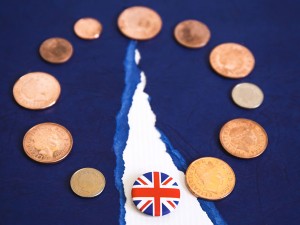
Just when you thought it was safe to go back in the water
Until a couple of days ago it looked as though sterling had forgotten its woes and was heading for the sunlit uplands. With a hiatus in the Brexit discussions and no scary new developments in Brussels, Britain seemed to be heading for what the media like to describe as a “soft” departure from the EU. Investors were reassured that, one way or another, a trading relationship would be crafted to retain most of the benefits of the single market and allow London’s financial institutions to continue offering their services across Europe.
At the end of last week, and especially over the weekend, that rosy picture began to fade. The Sunday papers were full of stories about dissent at the heart of government. Cabinet ministers were throwing down gauntlets to their colleagues and some of them appeared to be preparing the way for their own leadership challenge.
Not surprisingly, investors were less than impressed by the spectacle. Between Thursday morning and Tuesday morning the pound was lower across the board, falling by an average of 1.5% against the other dozen most actively-traded currencies. It lost two and a half US cents and one and a third euro cents.
Don’t forget the growth
Sterling’s retreat came despite some decent economic news. The UK economy expanded by a provisional 0.5% in the fourth quarter of 2017. It was not stunning growth but it did not compare too shabbily with the 0.6% reported by the United States and the euro zone.
Unfortunately, sentiment still rules the FX market. The good numbers were not enough to offset the bad feeling that had suddenly boiled up around the politics of Brexit.
Weak or strong dollar policy?
For decades the US administration of the day – of whatever political hue – has tended to talk the dollar up. This “strong dollar policy” was thrown into question a year ago when the president-in-waiting said of the strong dollar that “it’s killing us”. His finance minister expressed a similar reservation when he said ten days ago that “a weaker dollar is good for us”.
It earned him a ticking-off from the International Monetary Fund, which takes a dim view of countries weakening their currencies to improve their competitiveness. It also brought a reaction from the president, who said a couple of days later that he foresaw the dollar “getting stronger and stronger”.
On the assumption that the most recent comment from the White House is the one that matters, the administration does not have an axe to grind about an unduly strong dollar. That unconcern could change if the dollar were to begin moving higher.
When Mr Trump visited the World Economic Forum in Davos, Switzerland, he gave a statesmanlike speech that was the very model of temperance. Unusually, the president stuck to the carefully-crafted words on his teleprompter rather than going off-piste with an America-first tirade.
This Tuesday Mr Trump will deliver his first State-of-the-Union address to Congress. If he is unable to maintain the restraint of his Davos performance investors will once again begin to worry about trade wars and nuclear buttons.
Sarah, Senior Account Manager at Moneycorp
Moneycorp is one of the largest international payment companies supporting over 90 currencies. Last year Moneycorp traded over £22.6 billion worth of international money transfers. Find out how Moneycorp can help you with your international transfer here.






